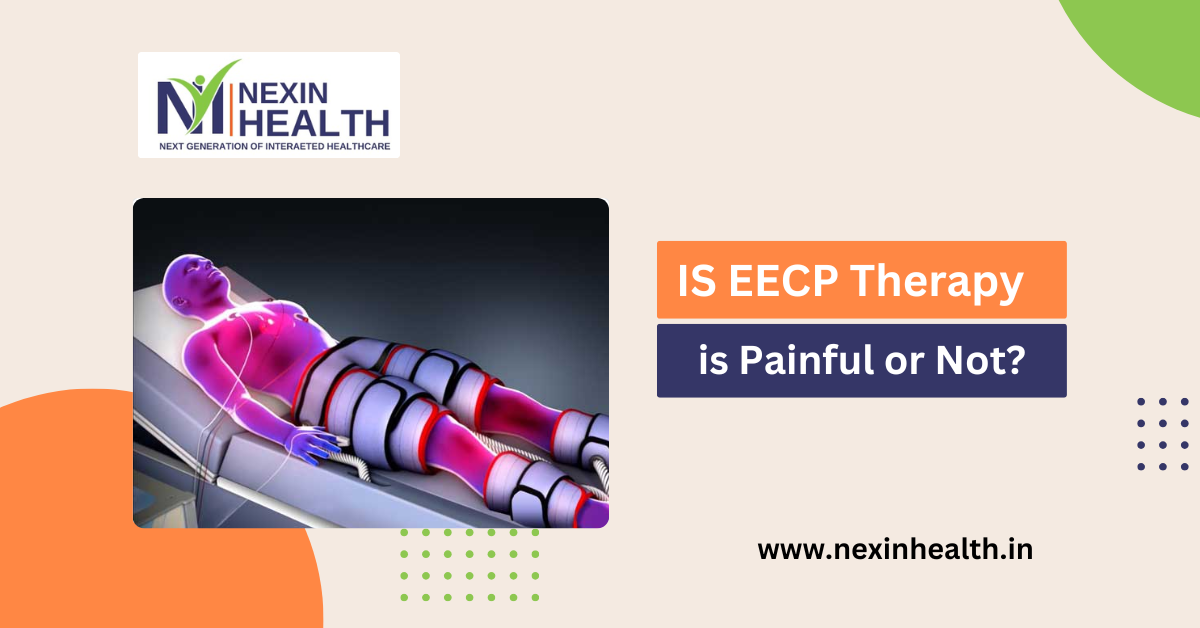Is EECP Treatment Painful?


Is EECP Treatment Painful: External Counterpulsation (EECP) is a non-invasive treatment often recommended for patients with angina or heart conditions who may not be candidates for surgical interventions. EECP treatment improves blood flow to the heart and helps manage symptoms by stimulating natural coronary artery growth, improving circulation, and potentially reducing chest pain. Since EECP involves multiple treatment sessions using specialized cuffs around the legs, it’s natural to wonder: Is EECP treatment painful?
In this article, we will explore the sensation patients might feel during EECP, examine how comfortable the process is, and provide insights from patient experiences to help you understand what to expect.
EECP therapy is a safe, FDA-approved treatment primarily used for chronic angina, heart failure, and related conditions. This therapy involves a machine that inflates and deflates cuffs wrapped around the patient’s calves, thighs, and buttocks, synchronized with their heartbeat. The inflation of these cuffs helps increase blood flow back to the heart, improving circulation and oxygen supply to the heart muscle and potentially developing new blood vessels over time.
EECP sessions are usually conducted daily for a few weeks, with each session lasting around 60 minutes. Patients relax on a padded table, where the cuffs inflate and deflate in sync with their heart rhythm, improving the heart’s overall efficiency and oxygen supply.
Most patients report that EECP treatment is not painful. The process involves inflating and deflating the cuffs with air pressure, which creates a pulsing sensation. However, each individual’s experience can vary depending on factors like body sensitivity, underlying health conditions, and initial comfort level with the equipment.
To address any potential discomfort, let’s break down the sensations that patients typically experience during the different stages of treatment.
During the first few sessions, patients may experience a slightly unusual sensation. The inflation of the cuffs around the legs and buttocks can feel firm, creating a pulsing or squeezing feeling with each heartbeat. For most people, this sensation is manageable and not painful.
However, as the cuffs inflate and apply pressure, some patients with increased sensitivity in their legs may feel mild discomfort at first. This sensation generally subsides after a few sessions as the body becomes accustomed to the process.
To ensure patient comfort, the EECP technician can adjust the cuff pressure to a suitable level. Communication between the patient and technician is key, especially in the early sessions. Patients should feel comfortable letting the technician know if the pressure feels too tight or uncomfortable, as minor adjustments can make a noticeable difference in the overall experience.
Additionally, patients are advised to wear comfortable clothing, such as loose pants or shorts, to prevent any skin irritation from direct contact with the cuffs.
The EECP machine’s pulsing action often becomes less noticeable over time. Many patients find the sensation relaxing after they become accustomed to it, comparing it to a rhythmic massage.
Some individuals even fall asleep during the session, which highlights how comfortable the process can become for many. However, patients with leg or lower body sensitivity may still need to make slight adjustments to their position or request lower pressure if any areas feel too tight.
While EECP treatment is generally well-tolerated, some patients might experience mild side effects. Here’s what to expect and how these sensations are typically described:
For patients new to EECP, there may be some psychological discomfort or anxiety initially due to unfamiliarity with the treatment. Relaxing music, deep breathing exercises, or light meditation can help alleviate these feelings. Knowing that EECP is a well-researched, safe treatment may also provide reassurance to patients who feel nervous.
According to patient feedback, most individuals find EECP treatment comfortable and even look forward to it as part of their health routine. While each patient’s experience is unique, here are a few key points commonly shared in EECP patient testimonials:
Overall, the consensus among patients is that EECP treatment is not painful. The gentle, repetitive nature of the treatment makes it tolerable, even for those sensitive to physical sensations.
For those starting EECP therapy, here are some tips to ensure the most comfortable experience:
If you’re considering EECP therapy for angina, chronic heart failure, or circulatory issues, discussing it with your healthcare provider is essential. They can assess your individual case and determine if EECP is appropriate for you.
While each patient’s experience may vary slightly, most people find EECP to be a painless, relaxing, and beneficial treatment. By improving circulation naturally, it allows patients with cardiovascular conditions to enhance their quality of life without the pain or recovery time associated with surgical procedures.
Also Read:
So, is EECP treatment painful? For the vast majority of patients, the answer is no. While some may feel an initial adjustment period with the pulsing sensation, EECP is generally regarded as comfortable and non-invasive. Many patients even find it to be a soothing experience that they look forward to. If you are a candidate for EECP, rest assured that you’re likely to find the process painless and potentially life-enhancing as it helps improve blood flow to the heart and alleviate symptoms over time.
Also Read: